[Updated with info about women’s medals] Matthias Kyburz and Judith Wyder gave Switzerland two GOLD medals in today’s European Championships Sprint after strong finishes on technical and hilly courses.
In the men’s class Kyburz was behind until the very last controls – and until the very last meters of Kyburz’s race it looked like Florian Howald (Switzerland) or Gustav Bergman (Sweden) would take the gold medal. In the end Kyburz was 2 small seconds ahead of Bergman with Howald in third another second behind. In the women’s class it was also very tight – with Wyder deciding on the last few legs against Nadiya Volynska (Ukraine) – 5 seconds behind – and Galina Vinogradova (Russia) and Maja Alm (Denmark) in shared third another 5 seconds behind.
The sprint course in Jesenic was very hilly – and the altitude differences along with many fences laid the ground for many interesting routechoices. See below for maps, results and the most interesting parts from the live coverage.
[Update 21:15 CET: The results in the women’s class were changed after the flower ceremony, around 18:05 CET. Instead of shared third place between Maja Alm and Galina Vinogradova as in the TV broadcast, Maja Alm was given a time one second slower than Galina Vinogradova. Thus at the medal ceremony Vinogradova got the bronze medal alone while Alm was in 4th. The reason for the change in the results was (according to what I have been told by contacts present at EOC) that there were problems with the timing system throughout the event. Several runners did not get a finishing time registered by the SI chip when crossing the finish line. Due to this, the organizers decided to use the backup system (video) for ALL competitors – also for athletes for which there was a time registered in the SI chip. This correction of times based on the backup system was done between the flower ceremony and the medal ceremony for Alm and Vinogradova, and thus Alm was given a one second slower time than Vinogradova. When Denmark noticed the change in the results (around 18:30 CET, according to what I have been told, not official message was given), Denmark delivered a protest. Based on the protest the SI chips of Vinogradova and Alm were checked, and it was found that the finish time was the same for both (in whole seconds). Thus the protest was admitted around 20:00 CET, and the results were corrected to a shared bronze medal between Vinogradova and Alm. There will be a new medal ceremony (not like in EOC 2012 were there was a similar situation with Alm getting a bronze medal after a protest and also was not given the medal at the ceremony). As of 21:30 CET, still waiting for official results.]
Women – How the race developed
VERY tight finish between Vinogradova, Alm and Rantanen. Alm & Vinogradova get equal leading time. COULD be GOLD! pic.twitter.com/Ng5wfib28U
— WorldofO.com (@worldofo) May 22, 2016
Late starter Judith Wyder with very good start in #EOC2016 Sprint – soon to first split https://t.co/ScEMrEoxPp pic.twitter.com/i7VmfHTnz0
— WorldofO.com (@worldofo) May 22, 2016
Last starter Volynska + Wyder can challenge Alm & Vinogradova – ahead when halfways in #EOC2016 Sprint Final pic.twitter.com/CdKrsTKs3r
— WorldofO.com (@worldofo) May 22, 2016
Tight finish between Volynska and Wyder for #EOC2016 Sprint. Swiss Power again strongest in the end. GOLD for Wyder! pic.twitter.com/zShrlZfwv4
— WorldofO.com (@worldofo) May 22, 2016
Long leg from 10-11 is where Alm took wrong route & lost valuable time – Wyder ran very fast & gained time https://t.co/nSmpGv13gZ #EOC2016
— WorldofO.com (@worldofo) May 22, 2016
@worldofo Leg 5-6 is another interesting leg https://t.co/sWdL1mJ7I0 – waiting for official split times for further analysis
— WorldofO.com (@worldofo) May 22, 2016
Men – How the race developed
#EOC2016 Men- now towards decision between Gustav Bergman, Martin Regborn, Florian Howald, Matthias Kybyrz! pic.twitter.com/qZ6VwcHVST
— WorldofO.com (@worldofo) May 22, 2016
Gustav Bergman with small advantage @gustav_bergman #EOC2016 pic.twitter.com/vKIT4SEA2m
— WorldofO.com (@worldofo) May 22, 2016
Kyburz decided against Howald on the last meters – secured #EOC2016 Gold medal in Sprint for Switzerland https://t.co/FPB2TMo8Yo
— WorldofO.com (@worldofo) May 22, 2016
Extremely strong finish by Matthias Kyburz – GOLD in tricky sprint at #EOC2016 #unofficial https://t.co/I7J5eueO7r pic.twitter.com/falnEOsFOs
— WorldofO.com (@worldofo) May 22, 2016
Ein neuer Europameister im Sprint-OL aus der Schweiz! pic.twitter.com/oDGaQ9ePyC
— Swiss O-Team (@SwissOTeam) May 22, 2016
Interesting leg from 7-8 in #EOC2016 Sprint Men. Many go up and loose significant time. Longer + stairs pic.twitter.com/s3VzhxNbbX
— WorldofO.com (@worldofo) May 22, 2016
Maps & GPS-tracking
Sprint Final - MEN

» See map in omaps.worldofo.com
EOC 2016 Sprint Final Women

» See map in omaps.worldofo.com
Official Results
Men
1. Kyburz Matthias SUI 0008 Switzerland 13.42
2. Bergman Gustav SWE 0003 Sweden 13.44
3. Howald Florian SUI 0004 Switzerland 13.45
4. Regborn Martin SWE 0013 Sweden 13.59
5. Hubmann Daniel SUI 0003 Switzerland 14.08
6. Westergard Hakon Jarv NOR 0017 Norway 14.16
7. Robertson Tim NZL 0001 New Zealand 14.17
7. Hubmann Martin SUI 0007 Switzerland 14.17
9. Sjöberg Oskar SWE 0017 Sweden 14.30
10. Osterbo Oystein Kvaal NOR 0012 Norway 14.36
11. Král Vojtech CZE 0006 Czech Republic 14.38
12. Leandersson Jonas SWE 0008 Sweden 14.44
13. Koistinen Olli-Pekka FIN 0011 Finland 14.45
14. Steiwer Gaute Hallan NOR 0014 Norway 14.46
15. Jones Kris GBR 0011 Great Britain 14.49
16. Egger Jonas SUI 0006 Switzerland 14.51
17. Svensk Emil SWE 0019 Sweden 14.53
18. Khramov Andrei RUS 0008 Russian Federation 14.54
19. Kivikas Kenny EST 0001 Estonia 14.57
20. Johansson Anton SWE 0007 Sweden 14.58
20. Boström Marten FIN 0002 Finland 14.58
20. Bobach Soren DEN 0002 Denmark 14.58
Women
1. Wyder Judith SUI 0051 Switzerland 14.23
2. Volynska Nadiya UKR 0056 Ukraine 14.28
3. Alm Maja DEN 0050 Denmark 14.34
3. Vinogradova Galina RUS 0078 Russian Federation 14.34
5. Rantanen Merja FIN 0071 Finland 14.36
6. Roos Elena SUI 0050 Switzerland 14.52
7. Anttonen Sari FIN 0050 Finland 14.56
8. Dvorianskaia Anna RUS 0052 Russian Federation 14.57
9. Harju Venla FIN 0057 Finland 14.59
10. Rudnaia Anastasiia RUS 0072 Russian Federation 15.12
11. Teini Marika FIN 0077 Finland 15.18
12. Hauswirth Sabine SUI 0057 Switzerland 15.22
13. Nurmi Kirsi FIN 0065 Finland 15.26
14. Jahren Silje Ekroll NOR 0055 Norway 15.29
15. Strand Lina SWE 0062 Sweden 15.31
16. Klysner Cecilie DEN 0053 Denmark 15.33
17. Basset Isia FRA 0050 France 15.44
18. Scalet Carlotta ITA 0054 Italy 15.47
19. Jenzer Sarina SUI 0058 Switzerland 15.51
20. Ohlsson Karolin SWE 0060 Sweden 15.52
 World of O News
World of O News
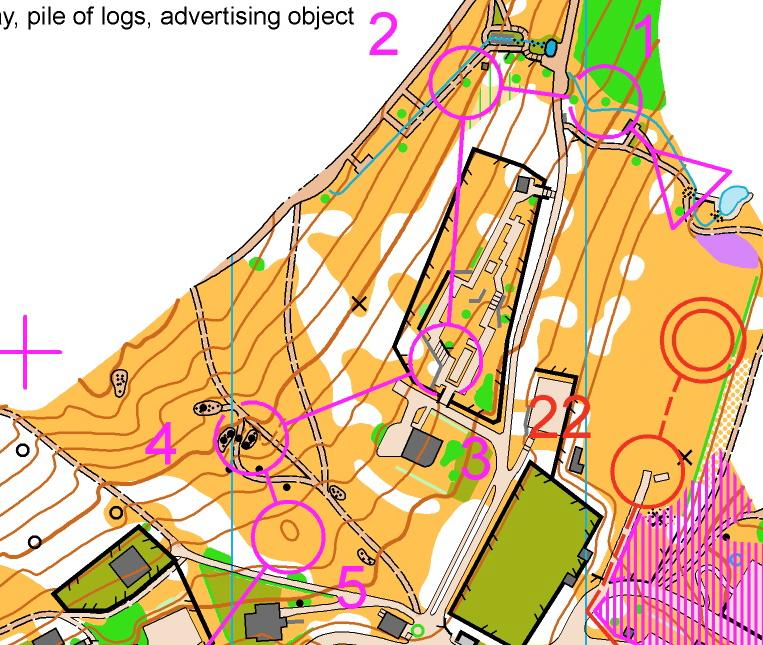
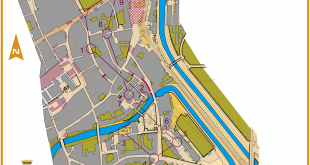
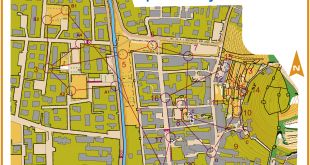
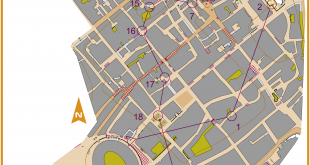
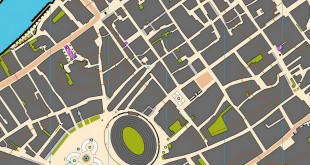
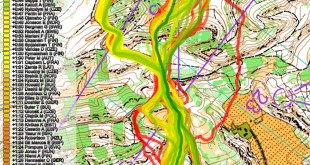
It would be interesting to know what runners think about the way how the fence above the stairs (route 8-9 men’s course) was marked in the map. In my opinion (just from PC screen), it is not very well readable – combination of stairs, border of the road, short length of the fence… It think quite few runners seemed to miss it…
IOF needs to do something with the timing system. I think they need some kind of homologation procedure which is mandatory, for example – for all FIS sports.
Now – at the finish line – the clock either stops/doesn’t stop/moves back, moves forward, is removed from the screen … you have no idea if the athlete won, lost, are tied, … FU.. it was possible to stop the running time at the finish line 50 year ago! There are transponders with an accuracy of 1/1000 which is used at cross-country skiing, biathlon, marathon, triathlon, … And there are photo-finish systems for relays and sprints (athletics 100m, cycling track, ..) The timing issues have been with orienteering for many years already! Who is in charge of this???
Just FYI: This is from the FIS ICR (and FIS has to approve (homologate) all timing providers):
611.2.1 Electric Timing
For all international competitions, FIS World Cup, FIS Continental Cups
and FIS competitions, two synchronised electronically isolated timing
systems operating in time-of-day must be used. One system will be
designated system A (main system), the other system B (back up system)
prior to the beginning of the race.
All time of day times must be immediately and automatically sequentially
recorded on printed strips to at least the 1/1000th (0.001) precision. Both
systems must allow for the calculation of net times by the mathematical
comparison of each racer’s start time to finish time. The final result for
each skier’s run is then expressed to 1/100th (0.01) precision by
truncating the calculated net time on course.
All times used for the final result must be from system A. If there is a
failure of system A a calculated net time from system B must be used
following the same procedure as set out in 611.3.2.1. It is not permitted to
substitute time-of-day times from system B for use with system A for the
purpose of net time calculations.
For all events, system A must be connected to its respective start gate
contact. System B must be separately connected to another electronically
isolated start gate contact.
Refer to the FIS Timing Booklet for more details regarding cabling and
complete wiring descriptions, diagrams and start gate installations.
All timing equipment and technical installation should be set up or
protected in such a way that danger to the competitors is avoided where
possible.
Synchronisation of the timing systems must occur within 60 minutes of the
start of each run. Synchronisation of all systems must be maintained
throughout each run. Timers must not be re-synchronised during any run.
Just curious …
WorldOfO:
“The organizers decided to use the backup system (video) for ALL competitors – also for athletes for which there was a time registered in the SI chip. This correction of times based on the backup system was done between the flower ceremony and the medal ceremony for Alm and Vinogradova, and thus Alm was given a one second slower time than Vinogradova. When Denmark noticed the change in the results (around 18:30 CET, according to what I have been told, not official message was given), Denmark delivered a protest. Based on the protest the SI chips of Vinogradova and Alm were checked, and it was found that the finish time was the same for both (in whole seconds). Thus the protest was admitted around 20:00 CET, and the results were corrected to a shared bronze medal between Vinogradova and Alm”
Is all of this actually covered by the IOF rules?
IOF Rules:
WOC, WCup,JWOC
23.7 In interval start races, an electronic finish timing system shall be used, allowing the
competitor to finish by running across the finish line.
WOC, WCup, JWOC
23.10 Two independent timekeeping systems, a primary and a secondary, shall be used
continuously throughout the competition.
The WOC rules also says:
WOC
23.8
In the individual sprint competition final, times shall be rounded down to whole tenths of a second. Suitable equipment, approved by the IOF, and suitable procedures shall be used.
However, the EOC rules (http://orienteering.org/wp-content/uploads/2010/12/2016-EOC-Rules.pdf) states:
“In the Sprint final, times shall be rounded down to whole seconds.”
Does anyone know the motivation for having different rules for EOC and WOC?
Dilbert >> the primært timekeeping system used for EOC is SportIdent Air+ with an Electronics finish line, using a video camera as backup. If this is enough according to the rules I don’t know. But I know which of the two systems has the highest accurracy – SI have an accurracy of 1/256 sec, the camera most likely 1/24 or 1/30 sec.
As both athletes had finish times in their SI cards, these must be used. One cannot randomly choose between the primary and secondary systems.
I have seen the exact finish times and could provide anyone with these down to 1/256 sec, but will abstain and just conclude both athletes according to rules had their time rounded down to whole seconds and won their respective well deserved bronze medals. Congrats Galina and Maja.
Much have been said in this case and emotions are high, but I would also like to underline the organizers in general are doing a great job. The courses, maps and organization of this event is of a high standard. I’m looking forward to the next 5 competitions.
Lars Lindstrøm
National coach
Danish Orienteering-Federation
Thanks a lot for the information, Lars. And good luck with the rest of the championships!
Since you have a start time based on the start list and not a real start time. The only time which counts is the time at the finish line. According to the IOF rules you have to round down to full second. Therefore, the higher resolution of SIAir+ compared to HD-Backup-Video doesn’t matter. Of course this will change when a start gate is used.
As I wrote, important for backup timing is the camera position. Only one camera angular to the finish line won’t enable you to recover correct finish times. Best (related to the costs) is to use two HD cameras: lateral (crossing of finish line) and frontal (recognize athlete bib number) merging this pictures to one backup video stream.
@Daniel Leibundgut: “Therefore, the higher resolution of SIAir+ compared to HD-Backup-Video doesn’t matter.”
But based upon what happened yesterday, the two systems seemed to give different times, right? Wrong setup?
@Lindstøm: “One cannot randomly choose between the primary and secondary systems”.
If you have proper precision and and setup of the primary (A) and backup (B) system you should be able to use the time from any of them. You should not have to change the times for all runners to B if you have to switch (ref. extracts of the FIS rules which I included above). But I did not find a detailed explanation of this in the IOF rules.
Thanks a lot for clarification, Daniel. I noticed that time differences between the two systems seem to be up to 2 seconds (based on the corrected times for Vinogradova which is two seconds slower in SI than in backup system; for Alm it is one second slower in SI than in backup system; at least according to how the live results were corrected). How can this be explained? Can this be camera angle only? Or some other problem?
“As both athletes had finish times in their SI cards, these must be used. One cannot randomly choose between the primary and secondary systems.”
From comments here and at the arena it looks like aftre the primary timekeeping system failed and backup system was used for ALL competitors.
It would very beneficial to know (for all parties) which particular section of IOF Guidelines did the Dannish protest reference.
Where can we find split times for sprint quals and finals?
Not yet available. I have been pushing the organizers hard for them, but there has been a lot of work to do for the IT people with the challenges at the sprint & the startlist for long qual where there were some issues with some nations coming late with athletes. It was a very interesting course, looking forward to see split times…
It seems from what is described here that the times are based on what is recorded in the runner’s SI cards. That does not seem very reliable. I do not understand why the SI cards should be used for timing.
Measuring time from start to finish is in most other sport based on technology that, as “Dilbert” says, has worked for ages. All that is needed is synchronized clocks that records the times when the runners crosses the start and finish lines.
Why make things more complex by mixing this with the technology used to assure that runners visit the all controls in the right order?
Answering Jan’s questions: Camera angle may be an issue, if it’s like the cam position I captured from TV stream: https://twitter.com/dleibund/status/734650663632785408 More reliable would be using a lateral and a frontal camera shown here on slide 17: http://orienteering.org/wp-content/uploads/2014/02/IOF_HLES2014_IT_Daniel-Leibundgut.pdf with the picture-in-picture video-recording.
To explain the time differences of around 2 seconds you mentioned, exact technical details of the timing setup used at EOC2016 is required (neither EOC2016-Bulletin4 say something).
In general the main issue is always, that you – as a timekeeper – have to merge a) start times (if a starte gate is used), b) split times (from the punching system) and c) finish times (from photo cells) to get the full results of a competition. It would be easier for organizers if it’s allowed to use only one system for punch control and timing (less complex). Up to date, the punching systems have no IOF approval for timing at WOC, JWOC, WCup etc. On the other side in «public orienteering races» it’s state of the art, all over the world to use electronic punching for timekeeping too.
«has worked for ages» … all you need is synchronized clocks…..it’s true but not sufficient today. Even for the synchronized clocks you need experienced stuff to handle it correctly and just in time. Today, you as a timekeeper have to provide the official results (including all the split times from each control) mostly before all the athletes has crossed the finish line ;-) and don’t forget in the «new age» you wan’t to have TVgraphics. There you have to provide one working interface for split times AND finish times and not different technologies.
To improve quality: reduce complexity and use experienced teams!
Well, for competitive integrity this is what’s needed: Assurance that runners pass controls in correct order, correct timing from start to finish line. Other stuff is Maslovian “cream on top of the cake”.
“one working interface for split times AND finish times” has been solved in other sports long time ago, so why reinvent the wheel?
I am not convinced that things are less complex if same system is used for both punch control and timing. Anyhow, separate systems can be integrated with a layer of software. There should be no need to do the timing differently than in other sports.
“Live” events have different requirements than ordinary orienteering races. That electronic punching works for timekeeping in most races does not mean that it is best solution for international events.
With respect to TVgraphics, I have yet to see an international orienteering event where they have managed to stop the clock at the finish line with the correct time. It has been like this for years. Why has it not been possible for IOF to take the necessary actions to fix this?
With regard to your last statement: you do realize that “international orienteering event” is not equal to “IOF sanctioned event”? So it’s not necessarily the IOF that “needs to fix this”! But anyway, it looks like you weren’t watching the TV streams from ESOC 2015 and 2016 then… (among others that come to my mind)